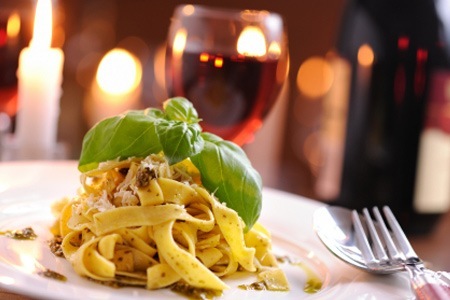Gastronomy and wine
There are many simple and typical rustic dishes that are characteristic of the cooking in the area: wheat and maize, bread, oil, beans milk and …good wine are among the principal ingredients, the excellent local dish is pici: a pasta made with flour and water that 'sticks' the fine strips to the palm of the hand. With the same pasta (but with an egg added) macaroni or fine tagliatelle are made. Panzanella is made with stale bread,

a salad seasoned with a good quantityof oil and enriched with the aromas of onions, basil, mint, or ribollita, made with slices of bread sprinkled with bean soup.
Flour made into dough, rolled and cooked in oil and until a short time ago, was made with maize flour, flattened and cooked between two leaves of cabbage. In the same way, ravaggiolo, a type of soft cheese that is typical of the area, is cooked between two fern leaves. Again with bread, toasted over a flame, with new oil and a clove of garlic rubbed over it, makes bruschetta. Chicken on the spit, duck, goose, pork (porchetta) cooked with salt, garlic and rosemary, roasted capon, guinea fowl or rabbit are the meats of the countryside, which are found in the city's restaurants.
To these we add the typical antipasti with crostini of spleen or livers, dishes of game and mushrooms, pansanto (sacred bread) slices of bread seasoned with boiled cabbage, vinegar and oil), as well as the celebrated beefsteak of the Chianina cattle, all accompanied with focaccia (flattened bread seasoned with oil) or a typical Tuscan bread without salt so as not to compete with the other flavours of the food.
Other important aspects of the gastronomy are the desserts: cantucci, almond biscuits to dip into the locally produced Vin Santo, lattaiolo similar to crème caramel, castagnaccio a chestnut slice, the 'ciaccia dei morti' the seasonal dessert for the
festivals of November, and crogetti the typical fried sweets of Carnival.































